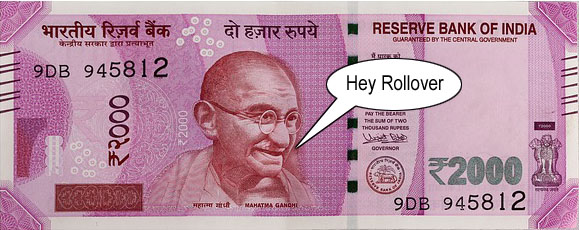You already know that traders and investors buy and sell stocks and indices in the futures market by paying a margin, usually 25% on the day of the transactions + mark-to-market differences as days pass (if required).
By the way, the options market does not allow traders to rollover positions.
But they cannot carry forward their positions indefinitely. Each futures contract comes with an expiry date.
On the expiry day, the trader can:
(a) Allow his positions to lapse
(b) Carry them forward by entering into an identical contract with a future expiry date
Many traders carry forward their future positions because they may not want to book a loss on expiry day, or they feel that the position if carried forward would turn in a higher profit OR they want to continue it because it is a hedge against their other positions.
When are rollover contracts settled in India?
On the last Thursday of every month. If that day is a holiday, the settlement happens on the preceding day (last Wednesday).
When do the rollovers begin?
Though most of the rollovers happen on expiry day, the action starts a couple of days before the D-day.
What is cost of carry in Rollovers?
Let’s do this with an example:
Assume:
(a) You have purchased Reliance futures at 1650
(b) The futures price on expiry day is 1600. The spot price is also the same. If you square up the position, you will lose Rs 50 per share.
(c) You don’t want to book a loss.
(d) The price of Reliance for the next month expiry is 1620.
If you want to carry forward your position in this scenario, you will have to first
(i) Square up your current position by selling it at the current price. You will incur a loss of Rs 50 per share (1650-1600) PLUS you have to pay the brokerage. So let’s say the total loss works out to Rs 51 per share.
(ii) You have to buy Reliance Futures for the next expiry at 1620 and pay brokerage on it. Let’s say brokerage/taxes is 1 buck per share. So, your additional loss is Rs 20 per share (1620-1600) + 1 buck brokerage/taxes.
(iii) Your total cost of carry in this example is 21. This is expressed as a percentage (21/1600 X 100 = 1.3% ) PLUS you have lost 51 per share. Therefore, if you were to break even on your trade, you have to hope that Reliance jumps to 1672 till the next expiry date.
Typically, the cost of carry should not be more than 1% given the current interest rate scenario in the market.
FDs and Treasury bonds pay 6.5% per annum while corporate bonds pay 8%-9%, so if you are paying 1% for a month it translates to 12% per annum, which is a fair rate of interest for carrying forward a transaction.
Anything over 1.25% cost of carry in a rising stock implies that the operators are feeling super bullish. But more on the interpretation below.
What is negative cost of carry in Rollovers?
Let’s do this with another example:
Assume:
(a) You have purchased Infibeam futures at 1550
(b) The futures price on expiry day is 1520, and the spot price is same as well. If you square up the position, you will lose Rs 30 per share.
(c) You don’t want to book a loss.
(d) The price of Infibeam for the next month expiry is 1510.
In this case, the cost of the next month expiry (1510) is lower than the current spot price (1520). Therefore this contract will have a negative cost of carry of -0.66% (10/1520 X 100).
Other calculations will be as per the example above.
Actually, a negative cost of carry signals bearishness and it is not a rollover you must get into.
How to analyze Rollover data in India and profit from it?
Sources that report meaningful Rollover data:
Equity Friend (visit this site to know last 6 month average rollover %)
| Rollover Percentage | Cost Of Carry | Price | TREND | Notes |
|---|---|---|---|---|
| High (above 70%) | High (0.7% and above) | Rising | BULLISH (also implies that longs can be trapped in case of a slide) | Note that the cost of carry is dependent on the prevailing interest rates and a lower rate of interest |
| Higher than previous average | High or Low | Neutral or rising or even dipping slightly | BUYING INTEREST | In this scenario, research the news and technical data to know what's going on |
| High (above 70%) | Negative | Neutral or slightly rising or dipping | BEARISH | Do not rollover your contracts when faced with this scenario |
| Lower than previous average | High or Low | Stagnant, High or Low | RISK AVERSION | This is a market that cannot make up its mind. Traders are risk averse. In such cases, you have to wait for a trend to emerge. |
| Lower than last 3-6 months' average | Low | Falling | BEARISH |


sir
i have bot ACGL 60 shares at 907 on BSE. now price has moved up to 1140.
i have purchased this with 5-6 years of holding view.
Please suggest should i hold this stock or book profits.
Thanks in advance